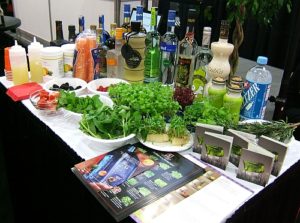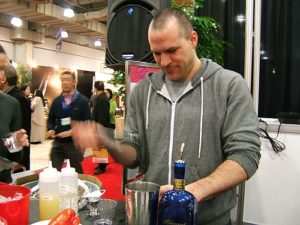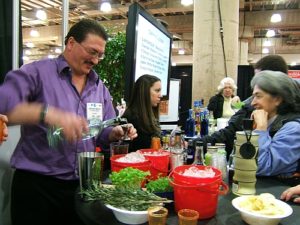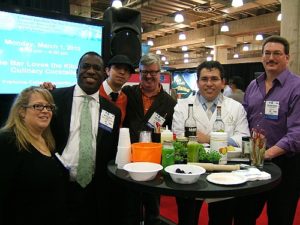Story and Photos by Joe DiStefano

“The Bar Loves the Kitchen” seminars recently held at the International Food & Restaurant Show (www.internationalrestaurantny.com) brought together top mixologists, bartenders, and industry experts to discuss a simple yet powerful idea: a closer relationship between the bar and the kitchen leads to cost savings and more efficient sourcing strategies all while enhancing the guest experience.

“The concept behind bar loves the kitchen is really about crossover between what happens in the kitchen and the back of the house and what happens in the front of the house and the bar,” said Francine Cohen, Editor in Chief of INSIDE F&B (www.insidefandb.com), who designed and hosted the seminars. “A lot of restaurants don’t take advantage of what’s happening back in their kitchen, they don’t think about how items like oranges and lemons can be ordered just once and used in both arenas. Don’t buy oranges that you’re going to zest for a dessert in the kitchen and then buy a whole other case of oranges for the bar to juice. Use the same darn orange; save yourself money.”
Cohen also stressed the importance of communication between the front and back of the house. “If your bar menu has some synergies with the lunch or dinner menu you’re bound to enhance the guest experience. It will be an easier up-sell for your servers to say I’ve got this great drink that we’ve created especially for the pork chop.”

Food/spirits consultant Jonathan Forester demonstrated these synergies by designing a drink to be paired with a pineapple upside-down cake. “Rum goes great with pineapple,” he said as he whipped up tasty libation made with Chairman’s Reserve Rum (www.stluciarums.com), Perfect Puree of Napa Valley’s Caramelized Pineapple concentrate (www.perfectpuree.com), orange bitters, lemon juice, and Demerara syrup. Forester also stressed the importance of communication. “Sometimes you have a bartender who doesn’t want to try new things,” he said. “As the bar manager you have to be on top of them making sure that they know every day what ingredients the kitchen has that are special, what they can play with.”
Playfulness was a major theme throughout both days of the seminar particularly because each involved hands-on interaction between audience members and those behind the stick with participants helping craft cocktails. “This is going to be a little experimental,” Cohen said of a young woman’s creation designed using Castries Peanut Rum Cream Liqueur, mint, and strawberries.
“I’m proud to say to my mother that I still play with my food, now I just play with alcohol,” said Douglas Miller of the Culinary Institute of America (www.ciachef.edu) as he shook up a drink using Leblon cachaça (www.leblon.com), coconut water, Perfect Puree’s Caramelized Pineapple concentrate, lemon juice, lemon balm, and cilantro (www.koppertcress.com) . “I never grew up. I still play in the sandbox. This is my playground. It’s fun.”

Miller continues, “We have the most amounts of ingredients ever, we have the most amounts of options ever, and if you look at the amount of food that’s available now in the United States versus10 versus 20 years ago there are so many different possibilities to come up with drinks. That’s what makes it so much fun.”

Whether it involves synergies between the chef and the bartenders, creating bespoke cocktails for patrons, or both it’s clear that better relations between the bar and the kitchen make for a more efficiently run house. What’s more, a house where the bar loves the kitchen is one where guests reap the rewards of tastier handcrafted cocktails made from fresh ingredients while the house itself reaps a greater profit. Shaken, stirred, muddled, or swizzled–that’s a win-win situation for everyone.
